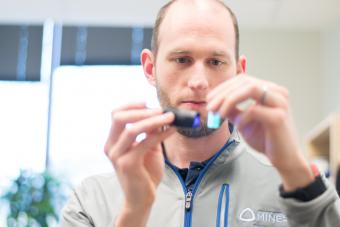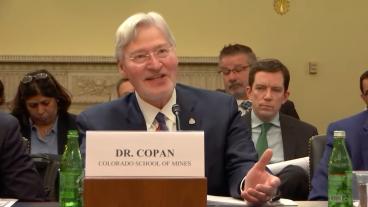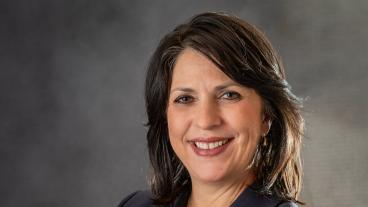Kevin Cash wins NSF CAREER Award for metabolic communication research

Kevin Cash, assistant professor of chemical and biological engineering, has been awarded a National Science Foundation CAREER Award for work to improve understanding of metabolic communication between microbial species in the environment.
Cash will receive $523,027 in funding over the next five years to develop an optical nanosensor platform that can measure linked metabolism – with sensors small enough to fit in the tiny spaces between bacteria.
Cash joined Mines in 2014. He holds a PhD in chemical engineering from the University of California, Santa Barbara and a BS in chemical engineering from Northeastern University.
We asked Cash a few questions about his research and how better understanding of metabolic communication could impact a wide range of fields, including the processing of heavy metal pollution, medical modeling and more.
Q: What is your latest research focused on?
A: Microbial communities are all around us. They’re present in soil, your body and every local pond—breaking down and recycling nutrients. The interdependence of these communities has been known for over a century, with the waste from one microbe providing nutrients to another. In just a handful of sediment at the bottom of a lake there are hundreds to thousands of species all interacting, but the bulk of laboratory microbiology is done on one species in isolation. Determining how nutrients flow between these different species is essential to better predict how microbial communities can process heavy metal pollution, impact bioremediation or adapt to new ecological settings.
With that in mind, our goal in this research is to develop our nanosensing tools to adequately measure interrelated metabolism in a spatially and temporally defined manner. To do this, we are making sensors that are small enough to fit in the spaces between the bacteria to report concentration changes in some of the key metabolites in these settings – oxygen, lactate, iron and sulfate. We are also developing smaller capillary-based model systems to better mimic the real-world settings seen in the environment while remaining suitable for use in the lab.
Q: What do you find most exciting about your research?
A: I think it is awe-inspiring to learn about the complexity of the microbial world all around us, and I find it incredibly exciting to help add to the understanding of how these species interact. Even with over a century of research, there are still numerous important questions in the field, and we hope to generate the tools necessary to unlock these mysteries.
Q: What is the potential impact of this work?
A: This work will develop the necessary tools and techniques to monitor transport dynamics in a range of fields, including heavy metal pollution, bioremediation and microbial ecology, especially in attempts to understand microheterogeneity. In these applications and complex communities in general, the analytes measured here are key cross feeding analytes that can be used as a proxy for the metabolic function of the entire microbial community so we can study the impacts on the community, rather than impacts on a single species.
The tools and techniques developed in this research can also benefit other scientific communities researching any three-dimensional biological system. Related applications where this work can make a large impact include medical models (e.g., tumor-mimicking organoids for cancer research, organ-on-a-chip systems, infectious biofilms and 3D tissue scaffolds), other environmental systems (e.g., microbial mats), and industrial systems (e.g,. biofuels production, wastewater treatment). The ability to spatiotemporally monitor metabolism with nanosensors will enable a wide range of advances in all of these complex metabolically linked systems.
Q: How does this research agenda inform your teaching?
A: I think this research helps to highlight that scientific understanding is never a finished project, despite the impression that some textbooks may give. To help demonstrate this to students, we will integrate this research to a first-year Studio Biology course, which is taught in an immersive laboratory setting rather than in a classroom. In this module, students will explore microbial community metabolism and apply nanosensors in scientific investigation – generating new understanding for the scientific community. We are also partnering with local schools to help integrate high school students into this research and expose preschoolers to STEM ideas related to microbial life.




